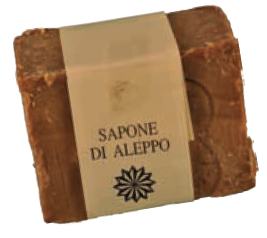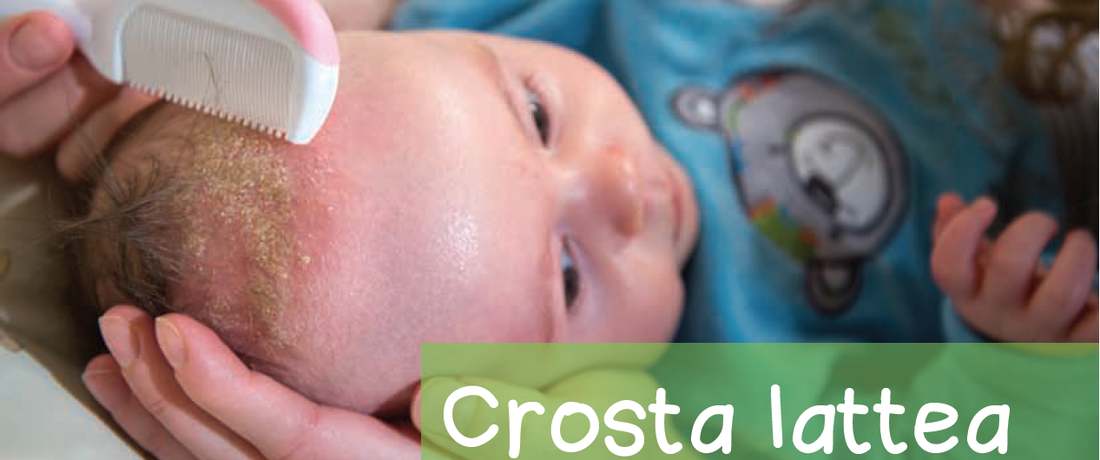Has a veil of cuticles and white-yellowish crusts appeared on your baby's head? Don't worry, it is almost certainly cradle cap, one of the most common ailments  and widespread in infants. It is a form of infantile seborrheic dermatitis which occurs in the first months of life (on average between the second week and the fourth month) and which mainly affects the scalp, but also the rest of the head and face, such as the forehead, nose, eyebrows and back of the ears. It looks like a greasy flaking, certainly not pleasant to the eye but generally not particularly problematic for the child.
and widespread in infants. It is a form of infantile seborrheic dermatitis which occurs in the first months of life (on average between the second week and the fourth month) and which mainly affects the scalp, but also the rest of the head and face, such as the forehead, nose, eyebrows and back of the ears. It looks like a greasy flaking, certainly not pleasant to the eye but generally not particularly problematic for the child.
CAUSES AND HYPOTHESIS
The causes are not fully known. Traditionally it was thought that the appearance of the cradle cap was attributable to the feeding of infants, exclusively based on milk (hence the name attributed to the disorder). Today, however, pediatricians are inclined to consider it an idiopathic condition , i.e. not linked to any specific cause, even if some possible concomitant factors have been identified:
■ permanence of maternal androgens (hormones) in the newborn's blood, altering the hormonal balance;
■ overproduction of sebum in the scalp;
■ difficult skin regeneration process;
■ presence of a fungus, pityrosporum orbicularis or malassezia furfur;
■ actual intolerance or sensitivity to lactose and milk proteins.
The cradle cap does not prevent hair growth, does not make them fall out, is not contagious, usually does not cause itching and does not cause particular discomfort for the newborn, although this is a subjective and variable condition.
NO CURES, BUT NATURAL REMEDIES
 When the first scabs appear, you can contact your pediatrician for a diagnosis and for him to offer you useful advice. In principle, you will see that - except in rare cases, in which he may prescribe selenium or tar-based products or even cortisone creams, in the presence of inflammation - no cure will be indicated to you, since the problem resolves spontaneously. Furthermore, from a medical point of view, it is not even essential to remove the cradle cap, which in any case will disappear within a few months, when the production of sebum will regularize and the skin will begin to regenerate correctly. However, to prevent the baby from being bothered by it and for aesthetic reasons - as mentioned, the cradle cap can be rather unpleasant to see - there are several natural remedies to treat and remove the scales.
When the first scabs appear, you can contact your pediatrician for a diagnosis and for him to offer you useful advice. In principle, you will see that - except in rare cases, in which he may prescribe selenium or tar-based products or even cortisone creams, in the presence of inflammation - no cure will be indicated to you, since the problem resolves spontaneously. Furthermore, from a medical point of view, it is not even essential to remove the cradle cap, which in any case will disappear within a few months, when the production of sebum will regularize and the skin will begin to regenerate correctly. However, to prevent the baby from being bothered by it and for aesthetic reasons - as mentioned, the cradle cap can be rather unpleasant to see - there are several natural remedies to treat and remove the scales.
Everyday:
■ dab and massage the scalp and the skin of the head and face with a cotton ball soaked in vegetable oil (sweet almond, jojoba, rice, coconut or borage; alternatively, ordinary olive);

■ you can add a few drops of calendula essential oil: the emulsion you will obtain will have a more soothing action;
■ gently comb the hair with a small, soft and rounded tooth comb to facilitate the removal of scabs
(but scratching: the skin could become irritated);
■ rinse the skin with a solution of water and rice starch.
Every two or three days:
■ wash the baby's hair and head with a delicate, natural, oil-based shampoo.
Furthermore:
■ instead of ordinary soap you can try Aleppo soap: it contains olive oil and laurel oil, it is hypoallergenic, without perfumes and preservatives, completely natural;
■ you can finally experiment with shea butter, to be sprinkled on the skin and left to act for about twenty minutes. Repeat the treatment until the cradle cap disappears.
By Tea Guidi. Article published in the magazine Nascere mamma | Winter Edition


